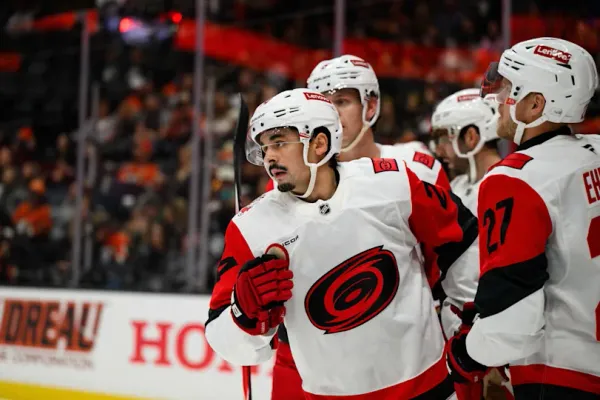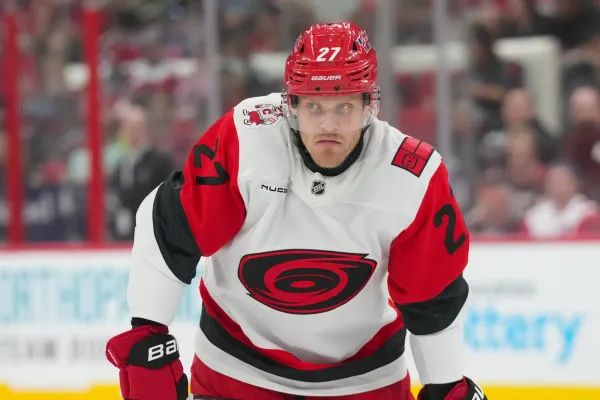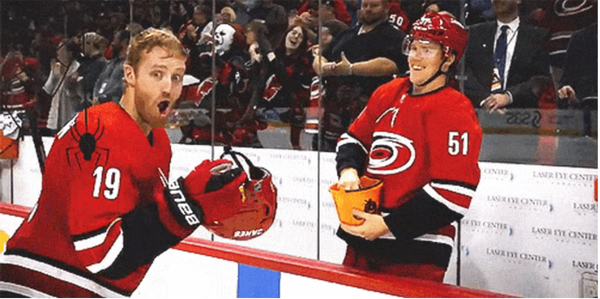A History of Recent NHL Expansion (aka Making It Up As We Go Along)
The NHL expanded three times in three years in the early 90s. They had no idea how to do it.
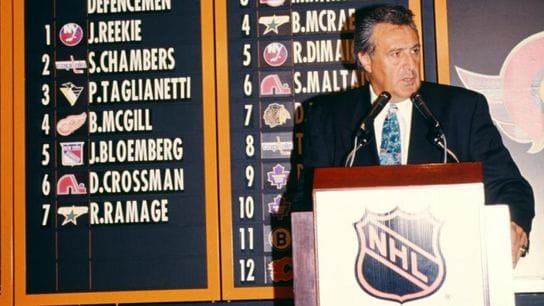
[from the Section 328 website back in December 2016, I took a look at the wild west that was NHL expansion in the 90s. It's funny looking back because the Vegas expansion that would come that following offseason was seen as "too easy" as Vegas made the playoffs that year, after it being "too hard" in '91 and '92. Then, Seattle seemed to hit the right amount of bad two years later, but who knows if that was because of rules or because Ron Francis is a bad GM. Oh well - enjoy my deep dive into expansion chaos of the 90s.]
As we enter December, it’s become clear that the majority of NHL fans still aren’t quite sure how expansion works and what their team might end up losing. This isn’t unusual, as the NHL expansion process — despite going through six expansion drafts over a course of ten years — seemingly changes every time the league does it. Why all the changes?
The expression that gets thrown around in NASCAR is “if you ain’t cheating, you ain’t trying.” In NASCAR, teams look for little advantages by exploiting loopholes in the rulebook, causing NASCAR to constantly rewrite the rules to close these loopholes. In the NHL with regards to expansion, NHL general managers did the same thing, looking for loopholes to protect their young players and depth, giving these new franchises very little to pick from. The result? Handshake agreements to not draft players, one-game NHL careers for expansion eligibility, and a whole lot of confusion. Let’s take a look at the 1991–1993 drafts, and you’ll see what we mean.
1991

Teams involved: San Jose Sharks and Minnesota North Stars (wait, what?)
OK, try to follow me on this one. George and Gordon Gund, who owned the North Stars, were dissatisfied with attendance in Minnesota and wanted to relocate the North Stars to San Francisco. The NHL rejected the move because they didn’t want to move a team outside of the hockey hotbed of Minnesota. In a compromise, the NHL awarded the Gunds an expansion franchise in San Jose (the Sharks), and in turn the Gunds were to sell the North Stars to an ownership group that would presumably keep the team in Minnesota (SPOILER: it wouldn’t.)
But, see, it wasn’t fair that the Gunds, who owned the North Stars and had developed a team that had just made a Stanley Cup Final, to have to abandon all those players for an expansion team. So, the NHL allowed the North Stars to protect 14 skaters and two goaltenders, then the Sharks started their expansion draft solely using the North Stars franchise. Then, once the Sharks had selected 14 skaters and two goaltenders from Minnesota, any other player on Minnesota who was eligible to be drafted earlier was dumped into a pool, and San Jose and Minnesota took turns drafting those players until the Sharks had 30 players.
THEN, the second expansion draft took place, where the Sharks and the North Stars would select ten players each from the remaining 20 NHL teams (one per team), including Kelly Kisio, who was drafted by the North Stars from the New York Rangers, but then was traded to the Sharks for Shane Churla, whom the Sharks had drafted from the North Stars in the earlier “dispersal” draft.
Hey, he got drafted?: NHL Hall of Famer Guy LaFleur was drafted by Minnesota from Quebec, but was dealt back to Quebec for Alan Haworth. LaFleur was already retired and Haworth was playing in Switzerland so it’s like it never happened. Pretty sure LaFleur’s Minnesota tenure isn’t on his Hall of Fame plaque.
Canes Connection: The Sharks selected an unsigned 1989 10th round pick from Minnesota in the dispersal portion of the draft. Artūrs Irbe would sign with the Sharks and become their franchise goaltender before several other stops, including the Hurricanes.
1992
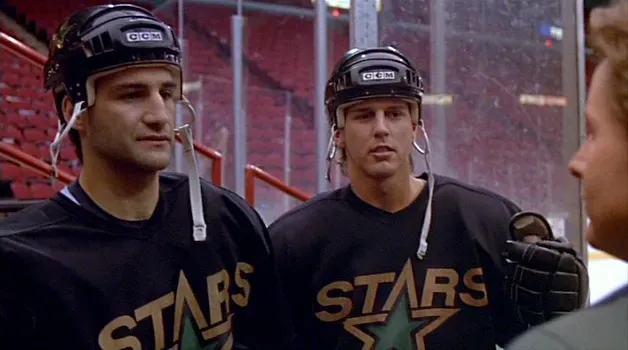
Teams involved: Ottawa Senators and Tampa Bay Lightning
The 1992 expansion draft was the trainwreck of trainwrecks, and would make a fun 30 For 30 if ESPN did hockey things. The rules for the draft were similar to the draft the previous season — the already existing teams were allowed to protect two goaltenders and 14 skaters (two less skaters than the previous year’s draft). In addition, there were experience requirements: At least one goalie needed to be exposed with 60 minutes of NHL experience, at least one defenceman with 40 or more games played in 1991–92 or 70 over 1990–91 and 1991–92, and at least one forward with 40 or more games in ’91-’92 or 70 in ’90-’91 and ’91-’92 had to be offered by each of the existing clubs.
So far, this sounds great for the Senators and Lightning. More experienced players, less players protected — maybe these teams will improve on the 17 wins the Sharks had the previous season. Oh, right, the Sharks. They were an expansion team the season before, so all their players were protected (though the North Stars didn’t have that same protection, and they were about as expansion as the Sharks were, but whatever). First and second year pros? Also ineligible to be drafted. Oh, and if you were a team that had a defenseman or goaltender drafted in the ’91 expansion draft, you couldn’t lose one in the ’92 draft, which meant a team like the Montreal Canadiens (who lost defenseman Jayson More to Sharks), could protect 14 forwards, just as long as they met that experience requirement. Those Canadiens would end up exposing only five forwards and a goalie on their entire roster — a roster that would end up winning the Stanley Cup later that season.
Goalies were a whole other thing. Only one team (the Islanders) were exempt from having a goalie drafted from them, so everyone else had to expose a goalie. But since that goalie only needed 60 minutes (ie. one full game) of experience, suddenly goaltenders were getting call-ups for the sole purpose of getting in 60 minutes and being eligible for the expansion draft. Both Calgary and Chicago did that, starting minor league goaltenders in the final game of the season, in order to fulfill expansion draft requirements.
Oh, and note that up there is says At least one goalie needed to be exposed with 60 minutes of NHL experience. I didn’t say “in 1991–92”. Just 60 minutes of NHL experience. Ever. The Washington Capitals, having paid attention to that fact, went out and signed a free agent goaltender with much more than 60 minutes of NHL experience. They signed Bernie Wolfe, who had 120 games of NHL experience as a goaltender. Mind you, Bernie Wolfe hadn’t played in the NHL since the 1978–79 season, but damn it, he had 60 minutes of NHL experience! Yeah, the NHL, to the shock of no one, said “no bueno” and didn’t recognize the contract, so the following day the Capitals signed another goaltender, Steve Weeks, who also had NHL experience so that they could expose him to the draft. He wasn’t selected, and the Caps would later trade him to Ottawa anyway because please take this goalie we never wanted in the first place.
Wait, free agency? Yep, teams were allowed to sign players and make trades before the expansion draft, so players got signed for the sole purpose of being made expansion draft eligible, and deals were done so that teams could protect the players with the spots they had available. In the end, Ottawa would end up winning 10 games that season (TEN), though Tampa didn’t do too bad for themselves. That said, changes would be made for the following season.
Hey, he got drafted?: No Hall of Famers in this crew, but Tampa would draft both Basil McRae, who was 100x the actor Mike Modano was in The Mighty Ducks, and Shawn Chambers, whom EA Sports felt was the worst professional athlete of all time, giving him a “1” rating (out of 100) in NHLPA ’93, one of — if not the — best hockey video game of all time (Chambers was actually a pretty good defenseman, but let’s not run the Sega Genesis narrative).

Canes Connection: No future Canes (that I can tell, at least), but Peter Sidorkiewicz and Sylvain Turgeon were both former Hartford Whaler starters who would see a large amount of ice time with the Senators that first season. Turgeon would lead the Sens in goals that year with 25, while Sidorkiewicz never recovered from being a goaltender on one of the worst hockey teams in modern history and would be traded to the Devils after the 1992–93 season, only playing four more NHL games in his career.
(PS — for more info about the 1992 NHL Expansion draft and how f’ed it was, click here for a great writeup where I got a lot of my info for this)
1993
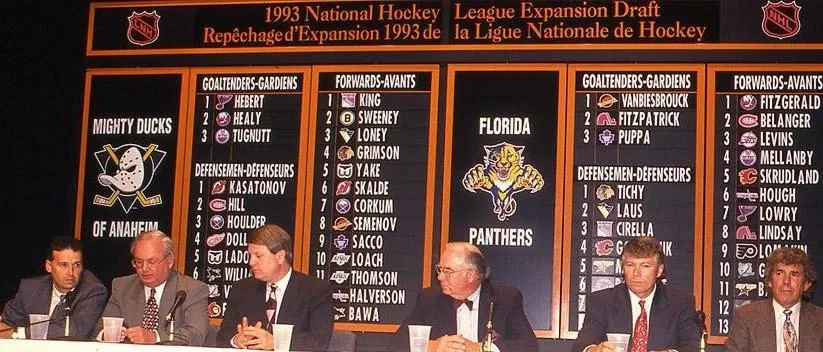
Teams involved: Florida Panthers and the Mighty Ducks of Anaheim. And the Sharks and Senators and Lightning, kinda.
During the 1992–93 season, the Lightning were ungood, the Sharks were bad, and the Senators OH GOD AVERT YOUR EYES THE HORROR. So it only made sense that the league should expand again. No, no, said the NHL, it’ll be cool this time. We’re going to change the rules again. We’re going to make it more fair for the new teams. Each team will only be allowed to protect one goalie (instead of two). And they’ll have to offer up two forwards with experience instead of one! And we don’t care if they lost a defenseman last season, they can lose one again this year — no exemptions! And second year pros can be drafted (except from the Sharks, Sens, and Lightning)! And you can still protect 14 skaters, but it has to be 9 forwards and 5 defensemen! DAMN IT WE’LL MAKE YOU OFFER GOOD PLAYERS.
Which was cool for the Panthers and the (Mighty) Ducks, but the Sharks, Sens, and Lightning were a little pissed. The NHL understood this, so they decided to have a “phase II” draft after the expansion draft where the Sharks, Senators, and Lightning could pick players from the Panthers and Ducks. However, if the Sharks, Senators, or Lightning picked someone from the Panthers or Ducks, they’d be eligible to have players selected from them by the other two teams, plus the Panthers and Ducks as well. Confused? I’m pretty sure everyone was.
The rules ended up helping out Florida and Anaheim, as both teams had strong expansion seasons. Anaheim would make the playoffs by their fourth season — Florida would be in the Stanley Cup Final by their third.
Hey, he got drafted?: John Vanbiesbrouck was a very good goaltender who was splitting time with Mike Richter on the New York Rangers. Due to the change in player protection rules by the NHL for the 1993 expansion draft, the Rangers would only be able to protect one goaltender, and they elected to protect Richter, who was younger. Instead of losing him for nothing, however, the Rangers dealt Vanbiesbrouck to Vancouver. Vancouver, wanting to keep both of their goaltenders (Kirk McLean and Kay Whitmore), felt that by acquiring Vanbiesbrouck they would either lose him or if they lost Whitmore, Vanbiesbrouck would be an adequate replacement. As it turned out, Vanbiesbrouck was selected by Florida, and was arguably their best player during their early years, leading them into the Stanley Cup Final during the 1995–96 season.
Side note to that — Glenn Healy went into the 1993 expansion draft as the New York Islanders starting goaltender. The Isles had acquired Ron Hextall from Quebec though, so Healy was left unprotected, and was selected by Mighty Ducks of Anaheim. However, in Phase II of the draft the following day, the Tampa Bay Lightning selected Healy from the Ducks. The Lightning then dealt Healy to the New York Rangers, who were in need of a backup goaltender, having dealt away Vanbiesbrouck earlier in anticipation of losing him in the draft. In doing so, Glenn Healy was on four teams in two days.
Canes Connection: Stu Grimson, who the Ducks selected from Chicago, was an original Hurricane, coming from Hartford when the team moved prior to the 1997–98 season. However, Sean Hill stands out the most — Hill was selected by the Ducks from Montreal and would play just one season in Anaheim before being dealt to the Ottawa Senators, then later the Hurricanes. Hill would play six season over two tenures with the Canes, including the 2001–02 Canes team that reached the Stanley Cup Final.
I’ll be posting soon a look at the current Canes roster and some possibilities that the Canes are looking at when the 2017 expansion draft takes place, but before that, I felt the need to point out how unpredictable the expansion process can be, so when that post looks like garbage after the draft, I can blame history.
